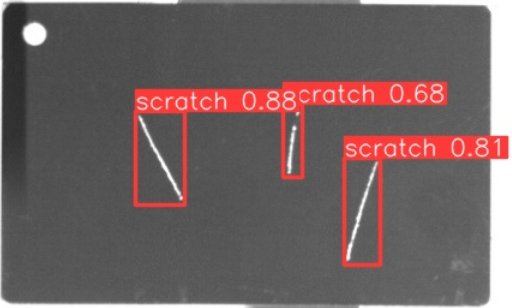AWS Machine Learning Blog
Category: Artificial Intelligence
Fast and cost-effective LLaMA 2 fine-tuning with AWS Trainium
Large language models (LLMs) have captured the imagination and attention of developers, scientists, technologists, entrepreneurs, and executives across several industries. These models can be used for question answering, summarization, translation, and more in applications such as conversational agents for customer support, content creation for marketing, and coding assistants. Recently, Meta released Llama 2 for both […]
Simplify medical image classification using Amazon SageMaker Canvas
Analyzing medical images plays a crucial role in diagnosing and treating diseases. The ability to automate this process using machine learning (ML) techniques allows healthcare professionals to more quickly diagnose certain cancers, coronary diseases, and ophthalmologic conditions. However, one of the key challenges faced by clinicians and researchers in this field is the time-consuming and […]
Create an HCLS document summarization application with Falcon using Amazon SageMaker JumpStart
Healthcare and life sciences (HCLS) customers are adopting generative AI as a tool to get more from their data. Use cases include document summarization to help readers focus on key points of a document and transforming unstructured text into standardized formats to highlight important attributes. With unique data formats and strict regulatory requirements, customers are […]
Automate prior authorization using CRD with CDS Hooks and AWS HealthLake
Prior authorization is a crucial process in healthcare that involves the approval of medical treatments or procedures before they are carried out. This process is necessary to ensure that patients receive the right care and that healthcare providers are following the correct procedures. However, prior authorization can be a time-consuming and complex process that requires […]
Code Llama code generation models from Meta are now available via Amazon SageMaker JumpStart
Today, we are excited to announce Code Llama foundation models, developed by Meta, are available for customers through Amazon SageMaker JumpStart to deploy with one click for running inference. Code Llama is a state-of-the-art large language model (LLM) capable of generating code and natural language about code from both code and natural language prompts. Code […]
Build an end-to-end MLOps pipeline for visual quality inspection at the edge – Part 1
A successful deployment of a machine learning (ML) model in a production environment heavily relies on an end-to-end ML pipeline. Although developing such a pipeline can be challenging, it becomes even more complex when dealing with an edge ML use case. Machine learning at the edge is a concept that brings the capability of running […]
Build an end-to-end MLOps pipeline for visual quality inspection at the edge – Part 2
In Part 1 of this series, we drafted an architecture for an end-to-end MLOps pipeline for a visual quality inspection use case at the edge. It is architected to automate the entire machine learning (ML) process, from data labeling to model training and deployment at the edge. The focus on managed and serverless services reduces […]
Build an end-to-end MLOps pipeline for visual quality inspection at the edge – Part 3
This is Part 3 of our series where we design and implement an MLOps pipeline for visual quality inspection at the edge. In this post, we focus on how to automate the edge deployment part of the end-to-end MLOps pipeline. We show you how to use AWS IoT Greengrass to manage model inference at the […]
Build a crop segmentation machine learning model with Planet data and Amazon SageMaker geospatial capabilities
In this analysis, we use a K-nearest neighbors (KNN) model to conduct crop segmentation, and we compare these results with ground truth imagery on an agricultural region. Our results reveal that the classification from the KNN model is more accurately representative of the state of the current crop field in 2017 than the ground truth classification data from 2015. These results are a testament to the power of Planet’s high-cadence geospatial imagery. Agricultural fields change often, sometimes multiple times a season, and having high-frequency satellite imagery available to observe and analyze this land can provide immense value to our understanding of agricultural land and quickly-changing environments.
Accenture creates a Knowledge Assist solution using generative AI services on AWS
This post is co-written with Ilan Geller and Shuyu Yang from Accenture. Enterprises today face major challenges when it comes to using their information and knowledge bases for both internal and external business operations. With constantly evolving operations, processes, policies, and compliance requirements, it can be extremely difficult for employees and customers to stay up […]









